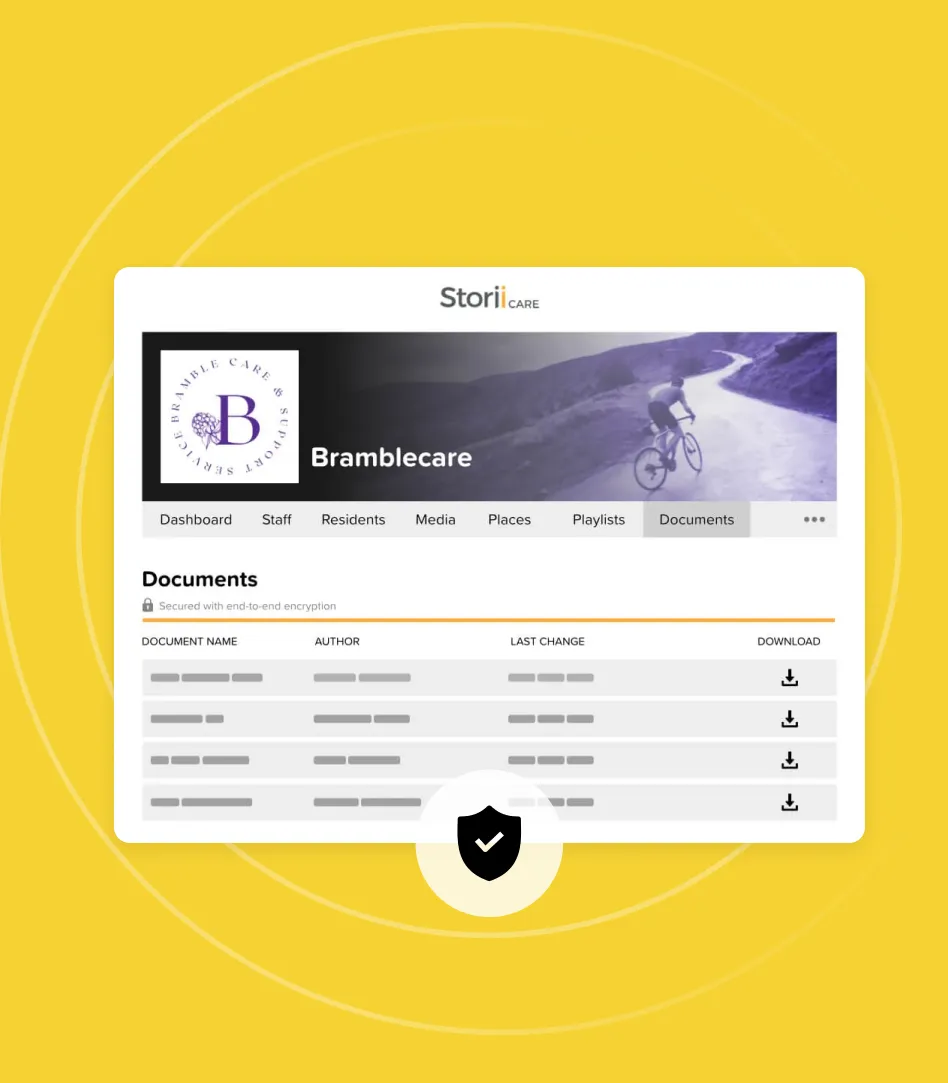What is Digital Care Planning?
Across the spectrum of care, providers create and refer to individual care plans when they’re seeing patients or service users. Until recently, care and support plans have been documented with pen and paper. However, the technology available today is changing that process. Using care management software in assisted living, adult day care, and in-home services is becoming a workplace standard. Care management systems digitize the workflows and operations of care facilities and support service providers. Generally speaking, digital care plans are a template or custom form that can be filled out, updated, shared and exported on a computer, tablet or smartphone device. Care plans can then be stored against a resident or service user within the system.
MYTH: Digital care plans can’t be person-centered
This sentiment seems to be more common among older generations of care staff who are used to paper-based recording. It is understandable that one may think because a care plan has been developed using a software system, it is less person-centred. The reality is that person-centred care is absolutely achievable with the help of technology. If complete customization of care and support plans is vital to your business and ethos, simply ensure that the system you purchase has this functionality. Additionally, software providers like StoriiCare center around the service user’s profile. And this digital profile can be generated with life story information, personalized playlists, photos and videos, etc. This approach is extremely person-centred and helps staff better know and understand the needs and preferences of their patients.
MYTH: Going digital means being entirely paperless
Being a paperless care home or housing association might be part of a long-term company strategy or vision. However, in our experience, very few care providers have fully replaced every paper record with an electronic tool. There are many workflows that can, and perhaps should, be immediately digitized to create efficiency and ease for capturing, sharing and accessing information. The reality is most places will be a hybrid of digital and paper-based information for the foreseeable future. If providers are thinking they’ll need to have a digital solution for virtually every aspect of their business, one can see how that becomes entirely too daunting and time-consuming to implement. It is important to have realistic expectations. “Going digital” does not imply that all information and services need to be delivered electronically. Instead, consider which workflows make sense to digitise in order to deliver the most immediate benefit to staff, service users and management.
MYTH: Finding a single, all-in-one clinical system is the best case scenario with the lowest risk of complications
Choosing the best care management system requires sensitive analysis and careful consideration. Single vendor packages or subscriptions provide a wide variety of functionality and initially seem like the easiest route to implementing digital strategies. In our experience, however, there is no platform which will adequately digitize all workflows and systems while minimizing complexity and risk. I’ve yet to see a system that can do it all and do it all well. Keep in mind that most systems providers, especially industry leaders, serve a global client base. This means product development and innovation will not be tailored to your needs and may not support a high level of customization. It is common for care providers to run into functional gaps or problems integrating new software with other existing systems. Therefore, the reality is that it may take several digital systems to reach optimal functionality for your business. Building a broad knowledge base of what is available on the market, in addition to various approaches to implementing digital care systems, will be massively beneficial.
MYTH: Digital systems will be too complicated for my staff to understand and use.
Yes, there are some systems out there which are clunky and complex. However, technology is increasingly becoming more intuitive and user-friendly. In our experience, resistant care staff are often surprised at how easy the system is to navigate and use. If you are concerned about how well your frontline staff will adopt a new system, there are ways to prepare for and avoid this barrier or obstacle. When searching for a digital care planning system, ask the vendors about what kind of training and support they offer. Is there a live support chat? Can staff find a database of help articles? Are there options for ongoing training sessions? Is training done in person or online? Anticipating the level of support staff will need and working with a vendor to plan an effective implementation strategy can do wonders for getting staff used to a new system.
Finding the Best Digital Care Planning System for Your Business
We hope that you'll consider booking in a StoriiCare demo if you are considering a new care management system. We provide solutions for adult day care services, residential care, home care, housing associations, and more.


.avif)

.png)
.png)
.png)










